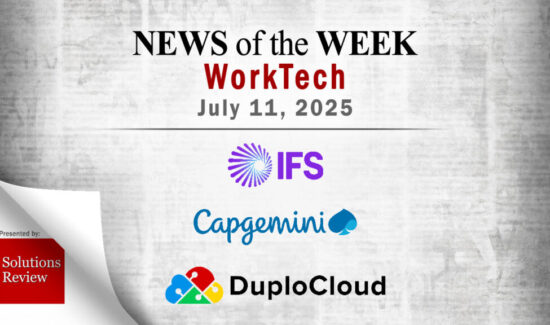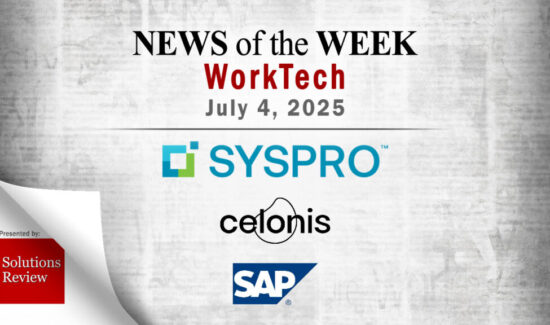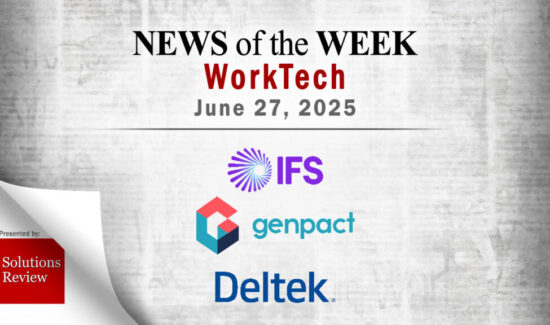What’s Changed: 2024 Gartner Magic Quadrant for Robotic Process Automation


The editors at Solutions Review have highlighted the updates in the 2024 edition of Gartner’s Magic Quadrant for Robotic Process Automation and summarized the findings.
Analyst house Gartner Inc. recently released the 2024 version of its Magic Quadrant for Robotic Process Automation. According to Gartner, “Robotic process automation (RPA) is a productivity tool that allows a user to configure one or more scripts (which some vendors refer to as ‘bots’) to activate specific keystrokes in an automated fashion.” These solutions can help organizations optimize day-to-day organizations by automating repetitive tasks and empowering employees to focus on more significant tasks.
To qualify for the report, each vendor had to meet specific criteria. These include selling RPA software directly to paying customers, demonstrating an active go-to-market/sales strategy, offering a commercially supported enterprise offering, providing support for RPA script development with standard programming languages, allowing users to deploy bots in multiple environments, and more.
Key Takeaways: 2024 Magic Quadrant for Robotic Process Automation
In this updated Magic Quadrant, Gartner identifies thirteen of the most significant Robotic Process Automation (RPA) providers in the marketplace. The researchers behind the report—Arthur Villa, Saikat Ray, Melanie Alexander, Sachin Joshi, and Mike Helsel—evaluated the strengths and weaknesses of each provider listed and ranked them on the signature “Magic Quadrant” graph, which provides readers with an illustration of each vendor’s ability to execute their vision. The diagram includes four quadrants: leaders, challengers, niche players, and visionaries. A breakdown of each category and the companies associated with it is below.
Leaders
UiPath once again starts the Leaders category with its UiPath Business Automation platform. This cloud-based platform provides technical and business developers with RPA, AI, NLP, API automation, low-code app development, process mining, intelligent document processing (IDP), application testing, process orchestration, and task mining capabilities. Its strengths as an RPA vendor are its emphasis on using generative AI to optimize its RPA offering, enterprise-grade viability, robust training and community programs, and its extensive RPA-specific ecosystem, including over 10,000 enterprise customers and 6,000 systems integrator partners.
Automation Anywhere, with its Automation Success Platform, is next on Gartner’s report. The solution provides enterprises and small and midsize businesses (SMBs) with RPA, API, process orchestration, analytics, a digital assistant, and other AI/ML-powered tools. Users can expand the platform with add-ons for task mining, document automation, a center of excellence (COE) manager, and marketplace integration. The company earns its place on the Magic Quadrant with its strategy for AI-driven capabilities, reputation for developing innovative features, prioritization of customer feedback, and partnerships with leading vendors like Amazon, Microsoft, and Google.
Microsoft is back in the Leader category with Power Automate, a solution built on Azure and designed to enable cloud-first, API-first, and desktop-based automation functionalities. Those capabilities include RPA with API integrations and orchestration, IDP, task mining, process mining, AI, and optical character recognition (OCR). Microsoft is one of the fastest-growing RPA vendors in terms of platform-specific revenue, with customer interest and adoption continuing to grow. Other differentiating characteristics include its competitive pricing plans, integration opportunities with Microsoft’s broader product portfolio, and growing partner network.
SS&C Blue Prism closes out the category with Blue Prism Enterprise, an RPA product that integrates with the company’s other products, including SS&C Blue Prism’s Chorus BPA, IDP, and process mining capabilities. The company has been expanding its capabilities beyond the core RPA product with the recent launch of Blue Prism Next Generation Platform (Next Gen), a cloud-native platform with multiple deployment options for enterprise customers. Its other strengths as an RPA vendor include customizable value bundles and its unified business model that combines AI, orchestration, and automation capabilities.
Challengers
SAP has moved from the Visionaries into the Challengers category in this year’s iteration of the report. It is the only Challenger that Gartner identified and earned its spot with the SAP Build Process Automation solution, a unified product that offers RPA, workflow management, and business rules management functionalities. The solution can also be integrated into the SAP Business Technology Platform (BTP) stack. SAP is well-regarded for its sales execution strategies, pricing plans, extensive feature suite, integration with SAP’s broader technology offerings, and prioritization of the customer experience.
Niche Players
Laiye is once again a Niche Player in Gartner’s Magic Quadrant. Its RPA product, Laiye RPA, includes the Automation Creator as a core module for RPA development. The platform is well-suited for multiple OSs, as it can automate processes across Windows, Linux, and macOS settings. Laiye has a solid market understanding, which informs its introduction of a new multi-modal, multi-channel conversation interface that makes it easier for users to use the platform. Its other strengths as an RPA vendor include its active community of developers, its development of utility-based and revenue-sharing pricing models, and a business model that enables customers to purchase its RPA tools as standalone products or as part of a larger suite.
Samsung SDS retains its place in the report with the Brity Automation Platform, which can integrate with the company’s internal AI Contact Center and visual capabilities. It is well-regarded for its ability to target different customer segments and its collection of small-scale, tactical automation capabilities for smaller organizations. Gartner also spotlights its partner ecosystem, customer experience, and ability to help customers upgrade their orchestrator toolset without interruptions as additional strengths.
IBM’s RPA product is part of its larger Cloud Pak for Automation solution. The IBM Robotic Process Automation offers RPA functionalities alongside process mining, digital assistants, API orchestration, IDP, and other AI capabilities to help customers identify, develop, and apply automation solutions. Gartner’s research identifies IBM’s global presence, demonstrated ability to deliver solutions worldwide, top-rated customer support offering, and task mining and screen scraping capabilities as its notable strengths as an RPA vendor.
Nintex is the final Niche Player in the report. The Nintex RPA product is available as part of the Nintex Process Platform, which includes workflow automation, digital forms, document generation, UDP, e-signature, process mapping, task mining, and business process automation features. Nintex differentiates itself with its strategic targeting of midsize enterprises, its web-based interface, its extensive ecosystem of automation customers, and its collection of pre-built automation templates and connectors for RPA and workflow automation.
Visionaries
Appian’s RPA product is part of the Appian Platform. It includes a low-code application platform (LCAP), multi-experience capabilities, IDP, process mining, decision automation, and business process automation (BPA) features. The company offers a simple per-user product bundle, which allows users to access the platform’s RPA bots alongside complementary automation tools, including LCAP, process mining, and IDP. Gartner also highlights Appian’s on-premises bot orchestrator, dedicated engineering innovation hub, and broader pricing strategy as differentiating traits.
Salesforce retains its spot as a Visionary in this Magic Quadrant. Its RPA offering is part of the Salesforce Flow suite and includes the following tools: RPA Manager, RPA Recorder, RPA Builder, and RPA Bot. Salesforce’s strengths as an RPA vendor include its multi-platform orchestration functionalities and its continued democratization of automation development via its investment in the Einstein GPT product. It also benefits from its complementary integrations with Salesforce’s other technologies, including an Integration Platform as a Service (iPaaS), enterprise LCAPs, and API management tools.
Pegasystems earns its spot as a Visionary with the Pega Robotic Automation solution, which combines the Pega Robot Studio and Pega Robot Runtime tools and is part of the Pega Infinity platform. The solution complements the company’s broader BPA, CRM, LCAP, multi-experience, and business rules capabilities. According to Gartner’s research, Pegasystems’ strongest features are its customer community, the Pega Marketplace, and its automation offering, which goes beyond tactical automation by offering intelligent decisoning, low-code, workflow automation, and process fabric functionalities.
ServiceNow closes out the 2024 Magic Quadrant with an RPA product built on its Now Platform, which includes custom application development and IT service management (ITSM) capabilities. The company’s RPA offering is part of its Automation Engine solution, consolidating its RPA, IDP, BPA, process mining, task mining, and integration tools. ServiceNow is well-regarded for its unattended and attended bot capabilities, use of AI to augment its platform’s capabilities, and its established presence across technology markets, which situates it as a reliable partner for clients to work with.




















